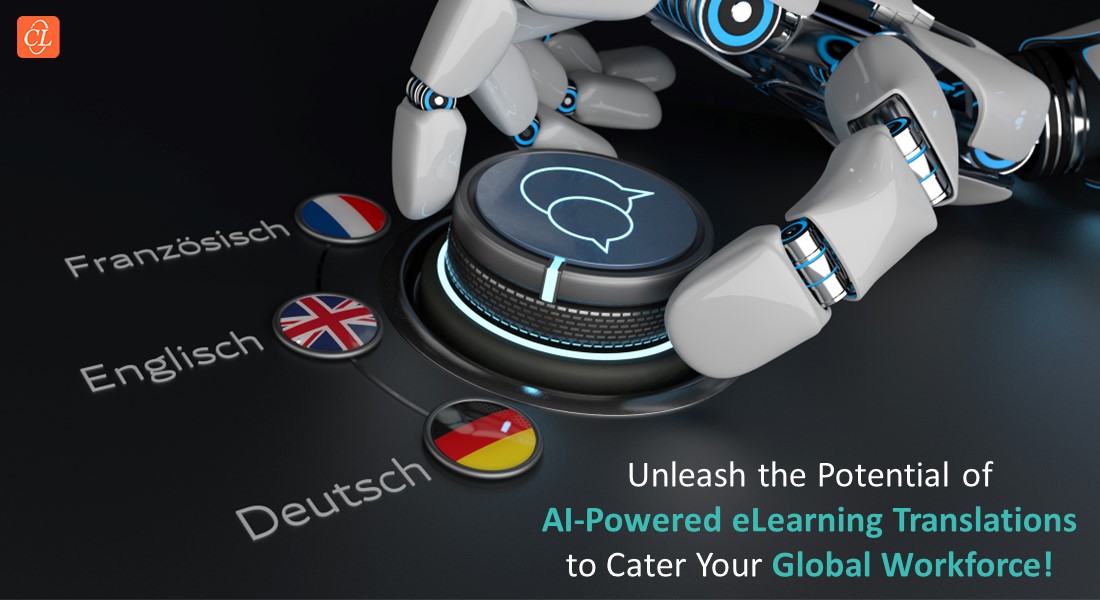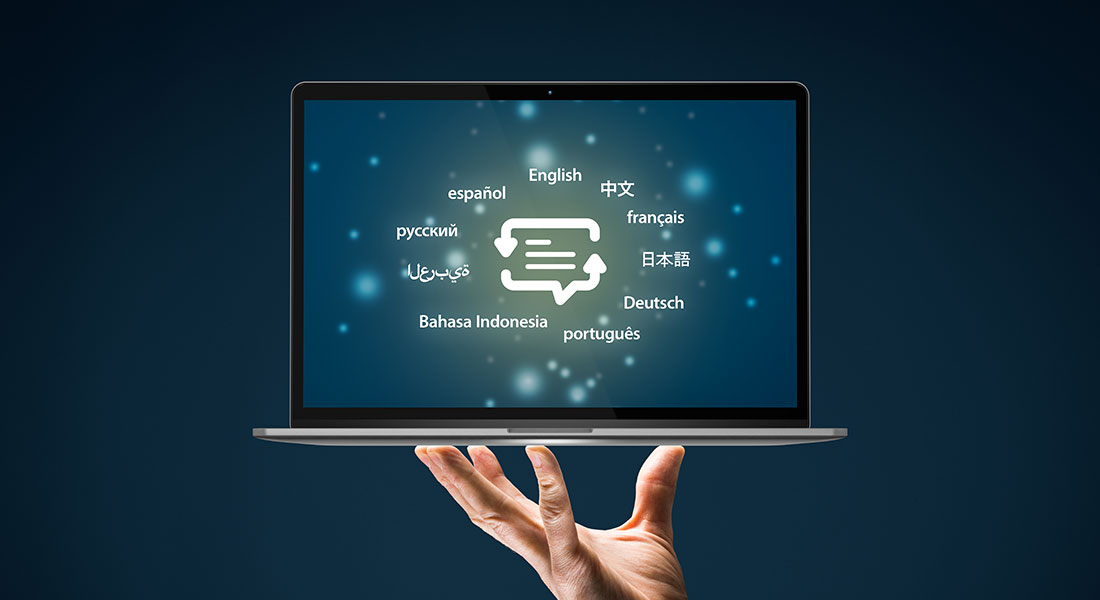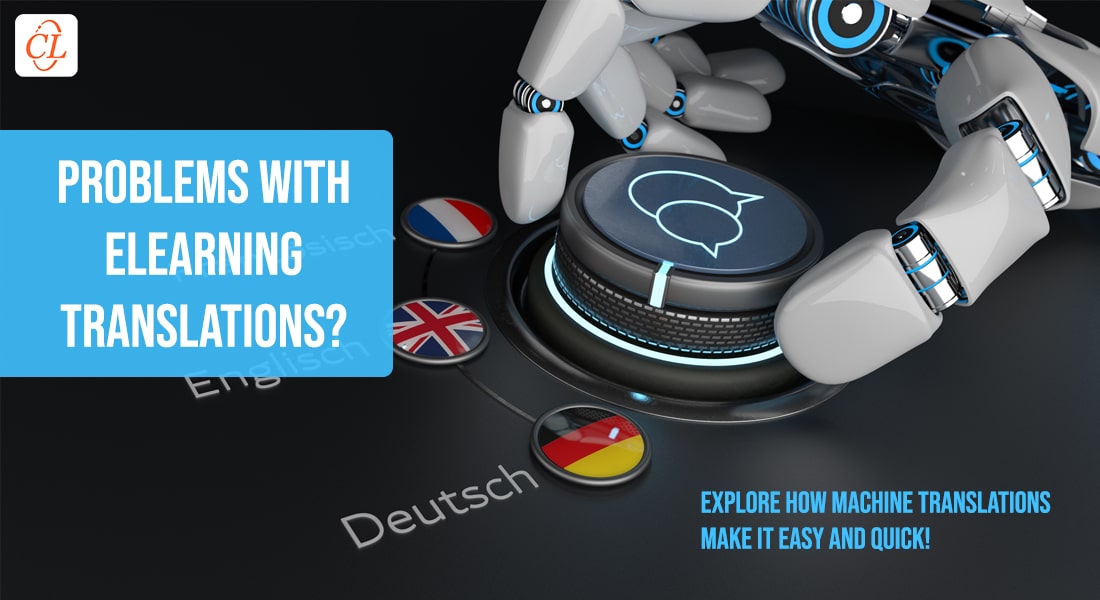How AI-Powered eLearning Translations Can Make a Difference
eLearning translations with AI have great potential, but at the same time, they also feature a number of limitations as well. Can the concept really take over the role of humans? Let's find out!

Artificial intelligence (AI) is actively being implemented across a wide range of industries, including eLearning. From authoring eLearning content to eLearning translations, there is massive potential and scope for the concept.According to forecast growth of the AI software market worldwide from 2019 to 2025, it is expected to grow at a massive 54% CAGR.
A study of Statista in 2020showed how artificial intelligence (AI) is being implemented across the globe in tandem with the human workforce. According to this study, 87% of leaders suggested that an environment where AIrecommends,and humansdecideis the best way to approach the technology. However, at the same time, 60% would allow AI to decide and implement, too. Here is an overview of the results.
Wondering How AI-Powered eLearning Translations Can be Effective?
AI is beneficial for eLearning translations because it:
- Speeds up the translation process
- Improves the accuracy
- Produces Contextual Translations
- Is cost effective
With the ever-growing popularity of eLearning (growth rate of 25% till 2028), it’s no surprise that there is an increasing demand for translated content. After all, eLearning offers a convenient and effective way to reach a global audience. However, translating eLearning content can be a challenge, as it often requires special expertise and knowledge of the subject matter. This is where AI comes in.
In this article, we will take a closer look at howeLearning translationsusing AI are helping authors create multi-language courses and whether AI can replace humans.
Do you have reservations about the need eLearning Translation? Here’s a compact resource that’ll answer your questions.
eLearning Translations Using AI – A Quick Overview
Translating eLearning courses using AI is the process of letting an AI-enabled software translate the eLearning content into another (or any other) language(s). This can be done for a variety of reasons, such as making eLearning content accessible to a wider audience or catering to learners who speak different languages.
Historically, the process of eLearning translation has been notoriously time-consuming and costly, as it often requires the services of a professional translator(s). However, with the advent of AI-based language processing and translation tools, the concept has become much easier and more affordable.
However, the concept does not come without its ups and downs, either. While AI does a very good job and is quick, one of the most pressing issues is that the results may not always be accurate.According to Synced Market Review, when put into real-world circumstances, language translations with AI have an accuracy rating of 60-90%. The quicker results you need, the more inaccurate these translations get.
A prime example of this is Google Translate. Try typing or pasting a sentence into the site, and you may find several errors in the same sentence. This can have a devastating impact on the learner and the host ofeLearning content, as inaccuracies can lead to confusion and frustration on both ends.
另一个挑战是确保诠释ed content sounds natural and easy to understand. This can be a difficult task, as AI-based translation tools often produce text that is stilted and awkward, translating sentences word for word.
It’s not all doom and gloom, though. The concept of eLearning translations has actually been revolutionary. A simple notification that the translations have been generated by AI-based translation tools or a disclaimer can give learners the grain of salt they need (in terms of language) and give them an incentive to research on their own.
When used correctly, AI can help speed up the translation process, and with the right training, it can produce more accurate and natural-sounding translations.
Benefits of Using AI for eLearning Translations
There are several benefits to using AI for eLearning translations.
- It can help tospeed up the translation process. This is because AI-based translation tools can automatically translate eLearning content without the need for human intervention.
- With enough language training and ML algorithms, AI-based translation tools canimprove the accuracyof translations compared to manual translations, especially when translating into several languages or with limited resources. This is because they often make use of data from a variety of sources, such as dictionaries and bilingual texts.
- AI-basedauthoring toolscan produce morecontextual translations. This is because they often use advanced algorithms that take into account the context of the text and the grammar of the target language.
- Using AI for eLearning translations can bemore cost-effective than using human translators. This is because AI-based translation tools can often translate eLearning content for a fraction of the cost of hiring a professional translator.
Using AI for eLearning Translations
Experts are already usingartificial intelligence (AI)for eLearning translations around the globe. There are several considerations to keep in mind when using AI for eLearning translations, with one of the biggest ones beingchoosing the right AI-based translation toolfor your needs.
There are a variety of AI-based translation tools available, so it’s important that you do your research and select the one that best suits your requirements.
Secondly, it is important that you have high-quality bilingual versions of your eLearning content. As mentioned above, there are a number of eLearning translation tools out there, but not all of them are trained equally. You should consider taking trials of the software to determine which one produces accurate translations.
Finally, you need to ensure that your eLearning content is well-structured and easy to understand before andafter the translationas well. The former will make it easier for AI-based translation tools to produce accurate and natural-sounding translations, while the latter will help improve the learner experience.
Some problems that humans are likely to encounter with AI-based eLearning translations include:
- 翻译可能不是100%准确和有限公司uld contain errors.
- The translated content might not be structured properly after translation. Alignment issues are the most common issues you will need to fix.
- The translated content may not be as high-quality as the original one and may seem generic.
- 有一个基于ai翻译工具的风险might not be able to handle all the different types of eLearning content.
- Jargons may not be translated that well.
Avoiding Problems With AI-Based eLearning Translations
There are a few things you can do to avoid these problems. One of the first steps to take is to make sure that you choose a tried and tested AI-based translation tool for your needs, as it will most likely be well-trained compared to other, newer versions.
Avoid jargon as much as possible and format your content in such a manner that it is easy for the software to read and analyze. After the translation, you should look at the formatting as well as jargon.A human will most likely be necessary to proofread the new, translated content.
The objective is not only to ensure proper formatting but also to make sure that the translated content sounds natural and fluent. Frequent breaks or abrupt shifts in ideas in the translated content may lead to the content feeling “amateurish” and, therefore, may not lead to the intended learner engagement level.
Can AI Replace Humans for eLearning Translations?
At present, AI CAN NOT completely replace humans for eLearning translations. This is because there are several challenges that need to be considered, as mentioned above when using AI for translations. However, AI can be used tosupplementhuman translators effectively, working together to improve translations’ speed, accuracy, and cost-effectiveness. Where the AI does the heavy lifting, humans will be needed to ensure the accuracy of content and formatting and improve learner engagement as much as possible.
There are several studies that show the potential of AI for eLearning translations. For example, a study aboutAmazon’s Mechanical Turkhas been used to produce accurate and natural-sounding translations, but human supervision and proofreading are still necessary.
Bottom Line
Overall, AI has great potential for eLearning translations. However, there are some challenges that need to be considered. If done right, AI-based translation tools can be a useful way to translate eLearning content.
There are many more such trends that are being recognized in the eLearning industry and many organizations are incorporating them in the development of their eLearning courses. Download this free eBook now and get a hang of all the latest trends in the eLearning world.






